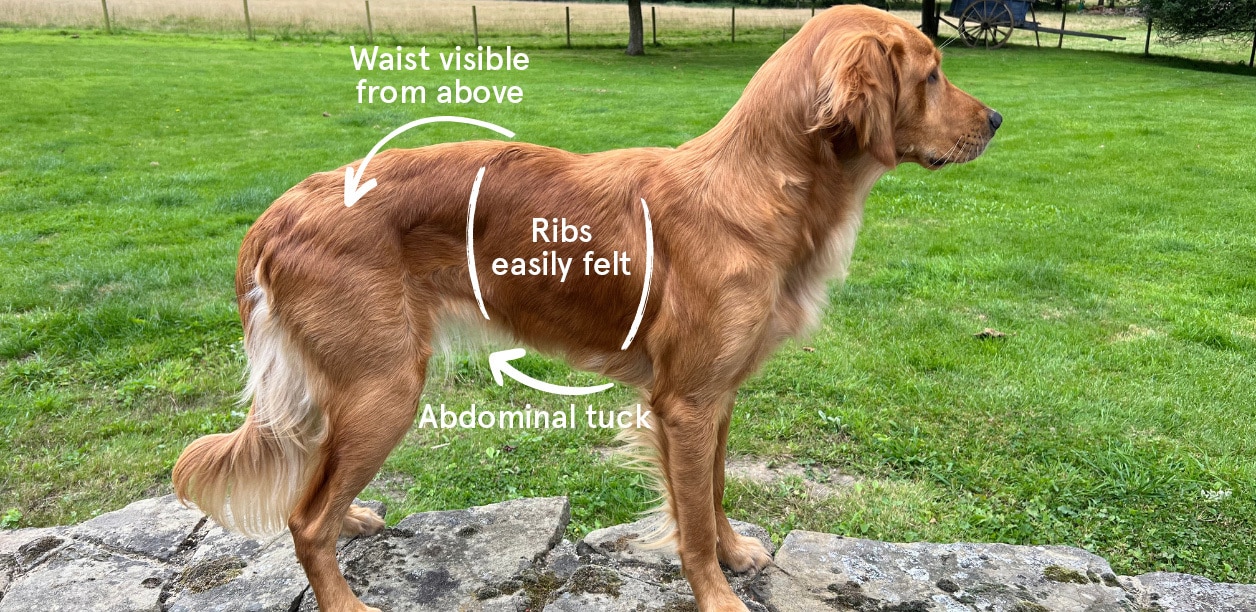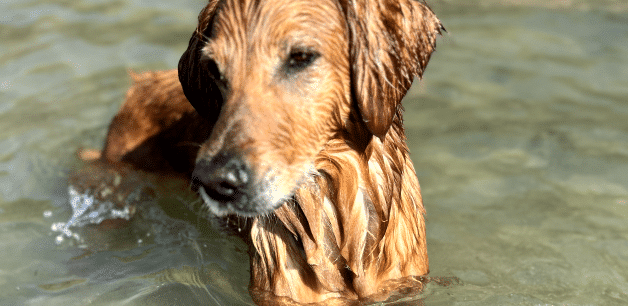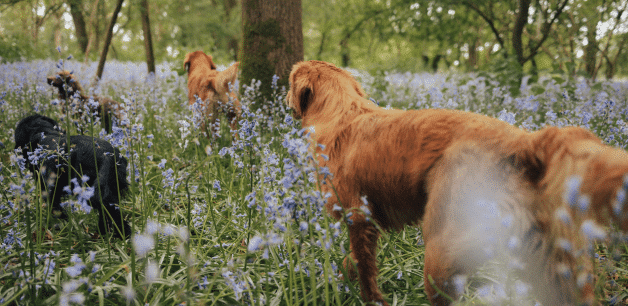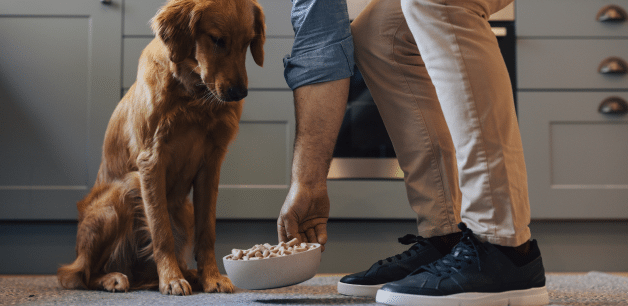The worries of weight!
Figuring out your dog’s ideal weight can be tricky. A staggering 65% of dogs in the UK are classified as overweight or even obese! Every dog is unique, and there’s no set rule for how to manage your dog’s weight. This is because weight and body condition are influenced by various factors such as age, breed, diet, and metabolism.
For this blog, I thought I’d share my top tips on how I keep my dogs in optimal condition. Also, you’ll learn how to accurately assess your dog’s body score, and discover methods to aid weight loss if necessary. I hope you find this blog useful!

How to correctly body score your dog
Learning how to accurately body score your dog is a valuable skill for dog owners. Recognising your dog’s ‘normal’ condition makes it simpler to spot subtle cues and shifts. This enables you to adjust their diet or routine if necessary, while understanding what’s typical for your dog. That way, you’ll be better equipped for how to manage your dog’s weight.
Below is my step by step guide on how to easily body score your dog:
Start by having your dog stand squarely, giving you a side view. It might be easier with someone holding your dog. Note their body shape: Are there noticeable fat pads? Can you see ribs? Is the belly tucked neatly with a smooth curve, or does it continue straight towards the back legs?
Now, view your dog from above. Are there slight curves beside the belly, or does their body appear straight on both sides? Do you notice fat pads or visible ribs?
Finally, gently run your hands along your dog’s sides. Can you feel the ribs? Are there extra fat pads? Is the abdomen firm and tucked, or soft and loose? Do the hip bones protrude, or are they nicely covered with muscle?
After following the above steps, review your notes for patterns. Dogs are usually rated on a scale of one to five for body condition: one being undernourished, five indicating obesity, and three representing the target. A score of three should show these signs:
Minimal or no noticeable fat pads.
Ribs aren’t visible, and the belly is tucked when viewed from the side.
Ribs are easily felt, and the hips and pelvis aren’t protruding.
If your dog’s ribs are easily seen, the hips protrude, and the belly tuck is strong, they might be at the lower body score. On the other hand, visible fat pads and a loose abdomen suggest a higher score.
Once you’ve assigned the correct body condition score to your dog, you’ve established a great starting point for how to manage your dog’s weight!
All about diet
As obvious as it sounds, diet significantly influences your dog’s weight and overall condition. Surprisingly, about 65% of dogs in the UK are deemed overweight or obese, which can lead to potential health problems such as obesity, respiratory issues, and arthritis. Because of this, preventing overfeeding is crucial. Unsurprisingly, diets low in protein, high in saturated fats, carbs, fillers, and additives can contribute to unwanted weight gain.
If your dog is gaining weight on their current diet, start by reducing their daily intake by 10-15%. Also, try to limit treats if possible. For training treats, consider using a portion of their daily food. I like to treat my dogs with small pieces of fruit and veg, such as apples and carrots.
If you find your dog is is still really hungry on a reduced diet, you can split their daily allowance into 3-4 meals. In addition, using a slow feeder bowl can help slow down their eating. Also, prioritising a protein-rich, high-quality diet will nourish them from the inside and help them feel fuller longer.

Exercise
Achieving and maintaining your dog’s ideal weight requires more than just adjusting their diet. Regular exercise is vital for their overall health and well-being. If possible, off-lead exercise provides both calorie-burning and mental stimulation. Also, use games like fetch to keep them active and aid in fat loss. However, try to moderate high-intensity exercise, to prevent joint strain.
Certain dogs may face exercise challenges, such as joint issues like arthritis. These factors can hinder weight loss and maintenance. Fortunately, there are other options! Swimming or hydrotherapy are fantastic for joint mobility and weight loss. Swimming is a non-weight bearing exercise, meaning it doesn’t exert too much pressure on joints. Proper supervision by a qualified hydrotherapist is crucial, especially for inexperienced swimmers. It’s also recommended to use safety aids like life jackets and inflatable collars. These help to prevent issues such as water inhalation.
Tip! Check your pet insurance policy as hydrotherapy might be covered with a vet’s recommendation for dogs with diagnosed joint problems.

One step at a time
Helping your dog to stay fit is simpler than you might think. As pet owners, it’s vital to make educated choices to prevent unnecessary weight gain. Try to consider if your dog truly needs that treat, or if a quick walk around the block is possible. Each chance to exercise means more calories burnt and a content, engaged dog, who is one step closer to their ideal weight! Remember, if you’re ever worried about your dog’s health, weight or condition, always seek advice from a trusted vet.
I hope this blog has offered some helpful tips on how to manage your dog’s weight! As always, your feedback is welcomed and I’d love to hear your thoughts and opinions. If there’s anything you’d like to discuss, please feel free to reach out to me at james@ella.co, and I’ll be more than happy to help!
All the best,
James & Ella x

